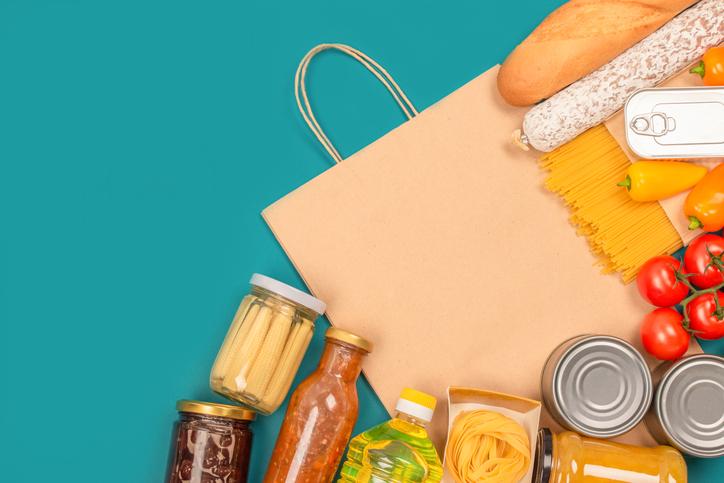Why would a new food bank volunteer bring a stack of canned tuna to her first shift? It’s not a riddle – many of our volunteers at the University of Alberta Campus Food Bank are past or current food bank clients. One of our student volunteers had been collecting the canned tuna she received from her food hampers. She didn’t like tuna, but she was too shy to reject it at our pick-up counter.
This incident told us two things: at least some of our donated food was going to waste, and our clients were receiving food they didn’t want. In 2023, when food banks around the world are struggling with shortages due to global supply chain issues and inflation-related spikes in demand, we can’t afford to waste anything.
- Three easy ways to stay healthy in the new year (even with a busy job)
- Five tips for showing compassion towards and supporting new students
- What can your university do to combat student loneliness?
Our food bank has not been spared from these shockwaves. In March 2021, we supplied 200 food hampers to students in need. Last March, we supplied 470 hampers. This March it was 1,100. As early as 2021, we saw a spike in food bank usage, which indicated that if we did not make changes we would not be able to give the best support to our clients, the majority of whom are international students (70 per cent) and graduate students (60 per cent).
That’s why we decided to adopt a grocery-store model.
In the past we operated like a traditional food bank, offering standard hampers to our clients. We kept donated food and toiletries behind closed doors, created hampers made of North American food bank staples such as canned tuna and pasta, and gave visitors the choice to swap out only certain items for alternatives.
The grocery model, which is becoming more popular in food banking, allows visitors to browse food banks’ shelves as though they were visiting a grocery store, pick which items they want to stock in their kitchen and interact more closely with food bank staff.
Since we made the switch in November 2022, we have gone from serving an average of 10.4 kilograms per visit to an average of 6.8 kilograms per visit. Our maximum limits have not decreased, so we attribute this change to clients shopping only for what they and their families will eat.
Tips for switching to the grocery-store model
The switch to a client-choice model has allowed us to stock specific items in smaller quantities. It has also allowed clients and volunteers to develop stronger relationships that help us discover new ways to serve clients.
But we have encountered challenges along the way and had learning experiences. Here are five tips for post-secondary food banks looking to make the switch.
1. Plan logistics with a lot of visuals
We thought about our hamper contents and how we might organise and display each food category so clients who were used to our hampers would find the transition simple. We created “shopping lists” – laminated lists with maximums for each food category – for clients to carry with them when they visited. The route clients take through our store is arranged in the order of the list and we have maps posted throughout. We also created signage that uses graphics to communicate maximums per household size, as English is a second language for many of our clients.
2. Take your time
We recommend, if possible, closing down for a week to allow time to prepare for the transition. Because demand for our food hampers was starting to exceed supply, we knew we had to try something new, and fast. If we had felt less pressure from increasing demand, we would have closed rather than switching our office layout between opening hours. Your team could also use the extra time to work on adding suppliers before the switch; this is something we only had time to tackle afterwards.
3. Experiment with stock and suppliers
Closer interactions with clients, combined with the flexibility of a grocery store, has prompted us to explore new supply chains for both existing and new items. For example, we simply can’t keep halal meat in stock. This has led us to adjust our store layout so that halal meat is less likely to be taken by clients who do not need it, and we are also exploring partnerships directly with ranchers and other local food producers to increase our stock with lower per-unit cost. You also get a deeper understanding of what people want to take, which means you might have to adjust your ordering to reflect what is more in demand. Don’t be afraid to mix things up.
4. Experiment with the aesthetic to make your food bank more welcoming for visitors
Many of our clients find the experience of visiting our space stressful and embarrassing. With this in mind, we tried to mitigate the feeling of being inside a food bank when we designed our space. We created a bright, colourful lobby with a multilingual welcome sign, painted the new space in calming pastels with bright signage, created a resource posting board and set up a speaker to play music during shopping hours. We also adjusted on-shift volunteer duties to make sure we engage clients while also keeping the space clean and tidy. We have found through client feedback that all these things put visitors more at ease.
5. Use the extra time that volunteers and staff spend with visitors to gain a deeper understanding of visitors’ needs
When we used the hamper model, volunteers, staff and visitors interacted briefly and only in the moments when visitors received their food hampers. In order to transition to the grocery model, we had to convert office and storage space into a welcoming shopping space. This change invited clients into parts of our office formerly reserved for staff and volunteers.
Because we were interacting more closely with visitors, we learned that many international students using our service had anxiety about Canada’s tax system and wanted to know more about filing their taxes. Our student volunteers booked a tax expert to run a clinic for clients of the food bank, and 200 campus food bank clients attended this event.
The main theme in our observations since switching to a grocery-store model is that we feel more like a community now. This adjustment has made our relationships with our clients more personal and allowed us to learn about the many other ways our clients need support.
We are very proud of the work our staff and volunteers have done to make this grocery model work, and we are happy to share more lessons with any post-secondary food banks considering the change.
Erin O’Neil is director of the Campus Food Bank at the University of Alberta.
If you would like advice and insight from academics and university staff delivered direct to your inbox each week, sign up for the Campus newsletter.




comment